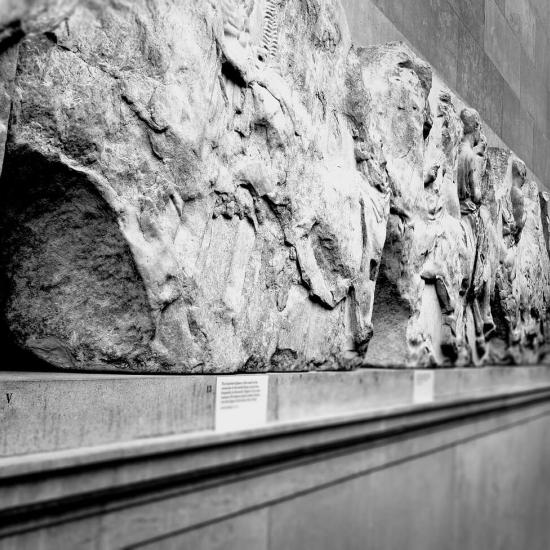From Christopher Columbus to King Leopold II of Belgium, statues have been the focus of protest across the world this year.
As with many urgent issues, a resolution is not easy. Organisations have struggled to find the best way to respond. In Oxford, the Rhodes Must Fall movement reflects this: should statues of a highly compromised individual be removed at the risk of “re-writing” history?
One proposed solution for awkward statues is to put them in museums, and give them context, so that they are less inflammatory and disrespectful while still providing opportunities for learning.

Indeed, museums are often regarded as spaces where difficult debates can and should occur, precisely because they give context to potential conflicts of interest and perspective.
But museums, too, have been encountering criticism for some of what they do, for example, holding on to objects stolen from other cultures.
The Parthenon Marbles at the British Museum are well known examples of this debate: should they be sent back to Greece, or is there a legitimate argument to say they are best kept in Britain? Has the idea of a “world museum”, where objects and artefacts from anywhere can be seen and studied and preserved and respected, had its day?
How should the leadership of the British Museum handle such difficult questions, especially as pressure to repatriate objects and expiate colonial guilt is growing with social movements like Black Lives Matter.
Oxford has been at the forefront of this debate, particularly with respect to the collections of its famousPitt Rivers Museum Some objects in the collection have been returned to their original societies; others taken down from public display; still others kept in exhibitions with more informative contextualisation.
Museums at once represent this burden, and remind us of our responsibilities.
Working on a case-by-case basis might be inefficient; but given the human complexities at issue, it is the right way to proceed. There are no easy answers to complex questions, and the humility to acknowledge this, and to act accordingly, is a mark of good leadership. This is as true in museums as in any sort of organisation facing ethical dilemmas.
Examples abound, including many that connect cultural organisations with big business: the opioid crisis in the pharmaceutical industry strongly impacts donor support for major institutions, including Oxford.
Many museums and galleries and theatres are criticised for receiving money from Big Oil. Sugar fortunes, such as that underpinning the Tate museums, were built on the blood of slaves. No extractive industry is beyond taint: diamonds, palm oil, diesel, paper …
For a long time, museums have been confronting the need to reinvent the ways they work.
Few industries at all can be completely disentangled from the global supply and distribution chains that link complicity across space and time.
Our capitalist systems grew from the exploitation by European powers of environmental and social resources all around the globe, and continue to do so. Museums at once represent this burden, and remind us of our responsibilities. And they provide more than just a metaphor for other organisations; they are a model for what to do now.
For a long time, museums have been confronting the need to reinvent the ways they work—both to acknowledge the need for justice and to re-articulate their purpose appropriately. Moreover, museum leaders do more than merely juggle conflicting priorities in complex organisations; they find ways to innovate and influence the societies they serve.
Businesses can—and must—do the same, and leaders in all sorts and sizes of organisations can learn from the ways museum leaders are confronting conflicts, rising to challenges, and forging paths to a more equitable future.




